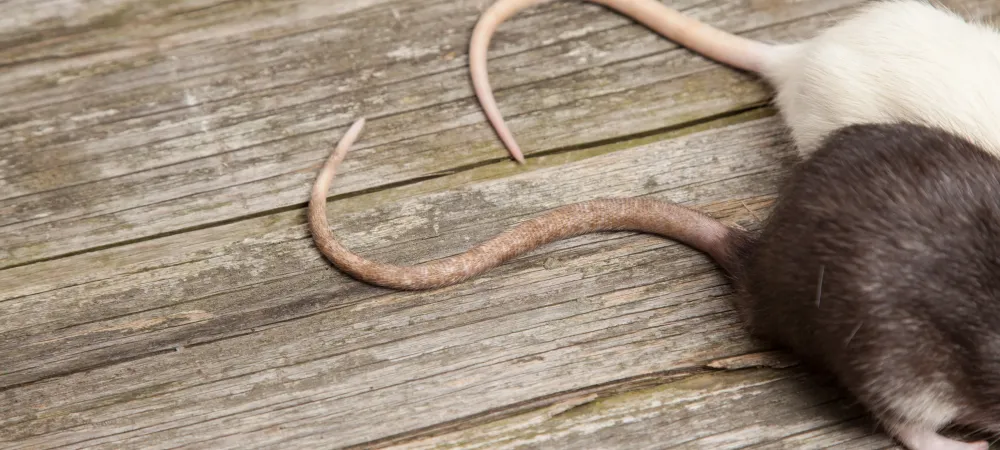Keep Rodents Out of Your Home

Almost any household can be susceptible to rodent infestations. A complex set of circumstances, like your climate, home structure and age, personal habits, and more, can determine whether you have to deal with rats and mice. A lot of it just comes down to luck, too. Even so, there are measures you can take to prevent rodents from setting up nests in your home. It’s easier to stop mice and rats from getting in than it is to evict them once they’ve gotten comfortable.
Common Types of Rodents Found in Texas
First, it’s important to know the different types of common rodents found in Texas, and what might attract them to your home. Here are some of the most common types of rodents in Texas and their specific identifying characteristics.
Deer Mice
Deer mice are commonly found in outdoor areas and, unlike many types of rodents, they’re native to North America. You might be more likely to spot these mice outside of your home than in it, especially in rural areas, but that won’t stop them from sneaking inside for coveted food and warmth. Tiny rodents that weigh less than an ounce and usually don’t surpass 7 inches in length (including tails), these mice are unique because of their white undersides (similar to deer). As nocturnal creatures and burrowers, these mice might be heard under your floorboards.
Roof Rats
Whereas many types of rodents stay low to the ground or in areas with plenty of access to food, roof rats, as the name might suggest, prefer the higher parts of buildings--attics, upper walls, and of course, roofs. They are on the smaller and skinnier side for rats, but they’re just as capable as tearing up your insulation or chewing through electrical wiring. Watch for droppings or listen for skittering in attics and crawl spaces to identify them.
House Mice
The house mouse might be the most common rodent you find invading your home, which of course is where it got its name. House mice have actually evolved over the years to be so deeply reliant on houses with food scraps and warm places to hide that they rarely survive far from human settlements. These mice start at around 6 inches in length (including tails) and are so tiny they weigh less than an ounce. Despite their size, they’ll be more than happy to make a nest of soft scraps in the back of your least-opened cupboard, and you’ll hear them moving around at night. They also reproduce with litters of 5-10 pups, which means one mouse becomes an infestation in record time.
Norway Rats
Norway rats are not actually from Norway, although they’re not native to the U.S. and were introduced hundreds of years ago. You’re more likely to recognize these pests from New York City subways, and they can be found throughout the whole country, including Texas. Norway rats can grow up to 17 inches in length, making them quite large household rodents, and can reproduce with up to 14 pups per litter 5 times per year.
How to Prevent Them From Entering Your House
Unfortunately, many rodents can squeeze through a hole the size of a dime. That means any gap in your house’s siding, any chink in the bricks, or any pipe or tube that enters the house through a hole that’s slightly too large for it can be an entry point for rats and mice.
Rats and mice can use any of these as entry points:
- Gaps in door frames or windows
- Pipes
- Sewer lines
- Holes
- Gutters
- And more.
Exterior Prevention
A great place to begin with rodent prevention is to go around the exterior of your house looking for any of these tiny holes and sealing them. This could include installing mesh on your gutter’s downspout, so that water can escape while rodents can’t climb in.
Sealing Interior Holes
Step two is checking interiors--such as the hookups for your washer/dryer, the holes through which your gas lines enter the home, or anywhere that pipes and wires come through. Make sure that the holes fit snugly around the pipes and wires. Stuffing steel wool in an ill-fitting gap or hole can be a good temporary solution.
Eliminating Food Sources
Mice and rats gravitate toward easy food sources. If you’re in the habit of leaving food out or improperly sealing containers, fixing those mistakes is one of the best ways to prevent a rat infestation. You should also make sure that all of your trash cans can properly close and seal.
Contact Your Local Rodent Exterminators
Even if you follow all the prevention methods above, no home is completely impervious to mice and rats. You may still end up catching sight of a long tail or finding chew marks on the cereal boxes in the pantry. When your rodent prevention efforts fail, it’s time to call the professional exterminators.
At Myles Pest Service, we’ve been treating homes against rodents and plenty of other pests for more than 30 years. We can use traps and baits to eliminate existing rodents and perform professional exclusion work on the outside of your home to close any holes or gaps you might have missed. We’ll work with you to create a customized plan that works for your family and your home, and that doesn’t break your budget. We can even provide continuing service to periodically check for rodents and ensure that prevention methods are working.
If you need help preventing a rodent infestation or dealing with a current one, call Myles Pest today at [phone-number].

